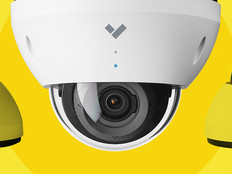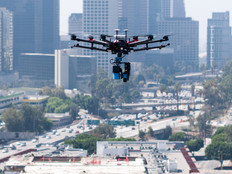Federal Funding Gives Local Transport Technology Procurement a Jolt
This big jump is a few years in the making, and a major factor has been the increase in federal funding for projects related to transportation and Vision Zero. We’ve seen general funds such as the State and Local Fiscal Recovery Funds supporting surface transportation projects among other eligible programs, such as relief for natural disasters and community-building initiatives.
More specific to transportation, we’ve seen dedicated grants such as the U.S. Department of Transportation’s Safe Streets and Roads for All program, which funds regional, local and tribal projects that prevent traffic fatalities and serious injuries. Projects eligible for SS4A funding include technologies designed to improve safety and protect vulnerable road users in high-traffic areas; installation of connected intersection-based safety solutions and vehicle-to-infrastructure; improving crash data collection and enhancing emergency vehicle warning systems; and improving crosswalks by adding markings, lighting and signage at stops.
There’s also the DOT’s Rebuilding American Infrastructure with Sustainability and Equity discretionary grant program, which dedicates funds to “critical freight and passenger transportation infrastructure projects,” according to the agency’s website. Approved use of RAISE funds includes highway or bridge projects, public transportation projects, passenger and freight rail transportation projects, port infrastructure investments, surface transportation components of airports, intermodal projects (moving freight by two or more modes of transportation), and projects whose components are otherwise eligible.
An important component of both the SS4A and RAISE grants is that they don’t just give organizations funds to invest in smart technologies; they also call for organizations to build development plans in the beginning so that they’re poised for success.
LEARN MORE: How to bring the cloud to the edge and accelerate smart city initiatives.
How State and Local Governments Invest in Vision Zero Programs
We’re currently seeing an uptick in command and control centers that manage and monitor these environments, whether they are transit or transportation. When you look at some of the things that state and local governments are spending money on, they include using transportation to deliver technology services to underserved communities and supporting general pedestrian safety. For example, when interstates run through underserved communities, state and local governments can use the interstates to create infrastructure for wireless connectivity. We’re seeing funding for this go not to cities or counties but to regional transportation planning commissions to make that happen.
Ultimately, the top areas of transportation procurement that we’re seeing in state and local governments are:
- Traffic signal infrastructure
- Command and control centers
- Video surveillance
- Video analytics
As for the Vision Zero side of things, the first phase of Vision Zero spending that we’re seeing from state and local agencies focuses mainly on research and proof of concept. We’re in the early stages here, and the second phase is where we’ll see money spent on implementing a host of technologies around pedestrian safety. What we are largely going to see in the future is investments in sensors, cameras and smart streetlights, along with communications devices that can be used to focus on problem intersections.
The SS4A grant program, for example, is a four-year program, and the first year for grant awardees is all about developing plans and doing pilot projects. Once those plans are approved, organizations can then think about developing their projects on a wider scale. The first year or two of the grant program is more focused on controlled pilot projects that can then extend out. In the last two years of the grant program, we’ll see larger projects being implemented.
This article is part of StateTech’s CITizen blog series.












